A large niche in the mushroom kingdom is occupied by Lamellar mushrooms, belonging to the Basidiol subgroup. Until recently, all of its representatives were united in the common Agarikov family. Most of the representatives of this species have annual fruiting bodies, which are often fleshy, less often leathery. Such mushrooms grow both in open glades, and in forests, plantings. Some species can be found in conifers, on sandstones.
There are many poisonous representatives, and in order not to be deceived during the “silent hunt” and collect only edible leaf mushrooms, it is necessary to carefully study the photos and names of these varieties.
Lamellar mushrooms, mushrooms, mushrooms, rowing, russules, champignons belong to lamellar. Mostly, during the period of active fruiting, these are autumn mushrooms. The color of the hats can be completely different: white, yellow, gray, brown and even greenish.
Content
- 1 Characteristic features of the species
- 2 Types of Edible Lamellar Mushrooms
- 3 Conditionally edible fruits
- 4 How to distinguish from poisonous varieties?
- 5 Distribution by region
- 6 Useful properties and restrictions for use
- 7 Recipes and features of the preparation of lamellar mushrooms
- 8 Answers to widespread questions
Characteristic features of the species
A characteristic difference between lamellar and spongy mushrooms is the spore-containing hymenophore, consisting of radial plates diverging from the peduncle to the edges. The shape of the cap varies, it may look like an inverted cone, changing during growth, it can be pillow-shaped, outstretched, bell-shaped, with a tubercle or indentation - it depends on the species. The fruit body has a fragile structure, unlike spongy counterparts.
The leg consists of a large number of hyphae - thin fibers, similar to threads, which are very tightly combined. Basically, they are cylindrical, hollow inside, combinations of hollow and solid parts are less common.
Often, in the early stages of growth, the leg is connected to the cap with a thin film, usually white. During growth, the film breaks, forming a kind of ring on the leg, which serves as a hallmark for edible (for example, honey agarics, cap annulus), and for poisonous mushrooms (fly agaric, fly toad).
A distinctive feature of some lamellae is the presence of juice, which is secreted when cut. This liquid is milky or transparent in color, thick and watery, has a bitter taste, which can be eliminated by soaking and boiling. Often such mushrooms (milkers, milk mushrooms, bitters) are used for salting. Varieties in which there is no juice are called crackers; in the sun they do not rot, but dry out.
Types of Edible Lamellar Mushrooms
This subspecies combines thousands of varieties. There are many similar, false and poisonous ones, so in order to always choose edible mushrooms, you need to study the photos, characteristics and features of the species.
The most famous can be considered such species of this group:
- Lactation, which is common in the northern regions of Russia, in the Urals and in the Volga region. He likes moist shaded places, grows close to the ground. The mushroom has a wide white hat, which is connected to a very thick leg. The pulp of the fruiting body is elastic, but very brittle, milky juice is released at the break, which becomes yellow in the open air. It has a pleasant specific aroma.
- The familiar champignon has a forest counterpart, which grows throughout Europe in forests, semi-deserts, and is found in temperate zones in the Russian Federation.Fruits in June to October. This is a mushroom with a brown ball-shaped hat and a long thin leg of white or gray color. The pulp is dense, white, darkens when exposed to high temperatures. It has a pleasant powdery smell.
- Russula food - are common in Europe, Asia, Russia, America, are found even in Africa. Often found in deciduous and coniferous forests, near-bog zones. Grow from June to October. The color of the hemispherical hat is brown, reddish, brown, it is mounted on a thick leg of white color. The pulp has a white color, in structure it is very soft and crispy. Russula has a pleasant forest smell and delicate taste.
Conditionally edible fruits
The main difference between semi-edible mushrooms from ordinary mushrooms is that they can not be eaten raw. In order for these varieties to become edible, they must be subjected to additional processing: some types must be boiled repeatedly, draining the broth, otherwise soaking and frying is sufficient.
It is very difficult to distinguish conditionally edible mushrooms from others by external signs, since they do not stand out with anything remarkable.
These species do not contain hallucinogenic or toxic substances, but some species have a specific taste, which disappears during their preparation.
These fruits have representatives that contain either milky juice, for example, milkers, breasts, or slightly poisonous substances - are contained in the lines. In the first case, you can get rid of this if you soak the mushroom for a while, in the second - by drying and reusable boiling.
The most famous of the varieties:
- a pile of white and black;
- the lactarius is white and brown;
- purple row;
- rowan poplar;
- winter mushroom.
How to distinguish from poisonous varieties?
The main sign of a poisonous mushroom is the structure of the hymenophore. It is also worth paying attention to the color and shape of the fetus, the smell and taste are not necessarily unpleasant, which can be misleading. Conventional varieties can also be dangerous to life and health if they are overripe or grow in ecologically polluted areas, for example, near industrial zones or highways. Inedible varieties among leaf varieties number about 30.
| Title | Hat | Leg | Fruit body |
|---|---|---|---|
| Death cap | Color - grayish, with a green tint. The shape is round or open. | The shape is cylindrical. It has a characteristic thickening at the base. | White colour. The structure is fleshy. It has a weak mushroom taste and aroma. |
| Amanita panther | Color - brown or grayish-orange. It has a large number of white speckled growths. | The shape is cylindrical. The structure is dense. It has a thickening underneath and a characteristic frill. | White colour. The smell is sharp, unpleasant. |
| False honey | Color - gray-yellow, in the center with a red tint. The shape is convex. | The shape is cylindrical. Inside is hollow. Has a reddish color at the base. | Color - gray-yellow. The smell is very unpleasant. It has a bitter taste. |
Distribution by region
Each region has its “own” popular mushrooms, which are most often found in the forest and fall on the table of mushroom pickers.
Lamellar mushrooms near Moscow
The nature of the Moscow region is rich in a large number of mushroom places, which is due to the presence of deciduous tracts, in which the most common:
- honey mushrooms;
- chanterelles;
- saffron mushrooms;
- russula;
- breasts;
- champignons;
- purple and gray rowing.
Peak harvest occurs in August-September.In the region, there are dozens of places where you can arrange a “quiet hunt”, the most popular are the Ruzsky, Yegoryevsky, Odintsovsky, Kolomensky, Meshchersky and Dmitrovsky districts.
Mushrooms of the Leningrad region
The Leningrad Region is famous for its coniferous forests, in which you can meet:
- chanterelles;
- red and yellow russula;
- bitters;
- black breasts.
The harvest season begins in late April, the peak month is August, during which pale grebes and fly agarics also grow actively. Popular fertile places are the villages of Sosnovo and Snegirevka.
Views of Belarus
The climate of Belarus, as well as extensive coniferous, mixed and deciduous groves are ideal for the emergence of a large number of mushroom places. On the territory grow:
- umbrella mushroom;
- breasts;
- russula;
- chanterelles;
- mushrooms.
The collection period lasts from April to the first frosts, and in warm and humid September, autumn mushrooms begin to grow actively, for example honey mushrooms, which are popular among mushroom pickers. The most productive places are located near Minsk and Vitebsk, their names are Khatyn Forest, Logoisk, the village of Stolbtsy.
Useful properties and restrictions for use
There is no definite answer whether mushrooms are useful or not, since they contain a lot of microelements that can affect the body in different ways. They have a large amount of pure protein, but they are low-calorie. The product contains vitamins, such as B1, B2, C, PP, D, A, magnesium, potassium, phosphorus and amino acids that stimulate the brain and contribute to stress resistance of the body.
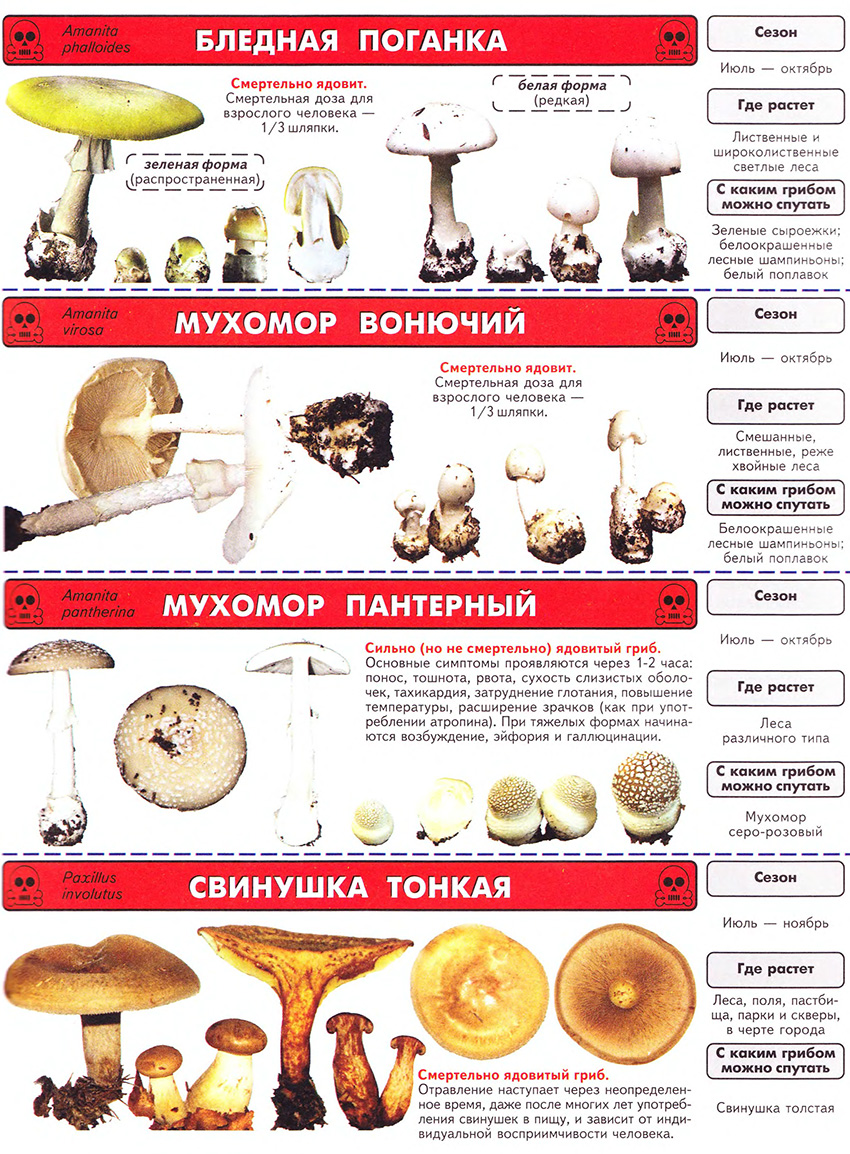
Of the minuses - due to the spongy structure and rapid growth, mushrooms can absorb toxins and radionuclides, so you should carefully choose to the place of collection. In addition to useful trace elements, chitin is found in the fruit, which is difficult to digest.
It is not recommended to eat for people who have problems with the stomach, this can cause an exacerbation of diseases. Those suffering from pancreatitis and peptic ulcer disease, this product is strictly prohibited. Any variety should be consumed in limited quantities so as not to harm the body.
Recipes and features of the preparation of lamellar mushrooms
Despite the fact that these are mushrooms of the same group, different species require different approaches to cooking:
- the breasts contain milky juice, so they are soaked for at least 3 days before salting;
- oyster mushrooms and champignons are universal, suitable for any dish and combined with different ingredients;
- Russula is boiled, stewed, pickled, fried. Not suitable for drying, because they have too fragile structure. It is necessary to remove the peel from the hat before cooking;
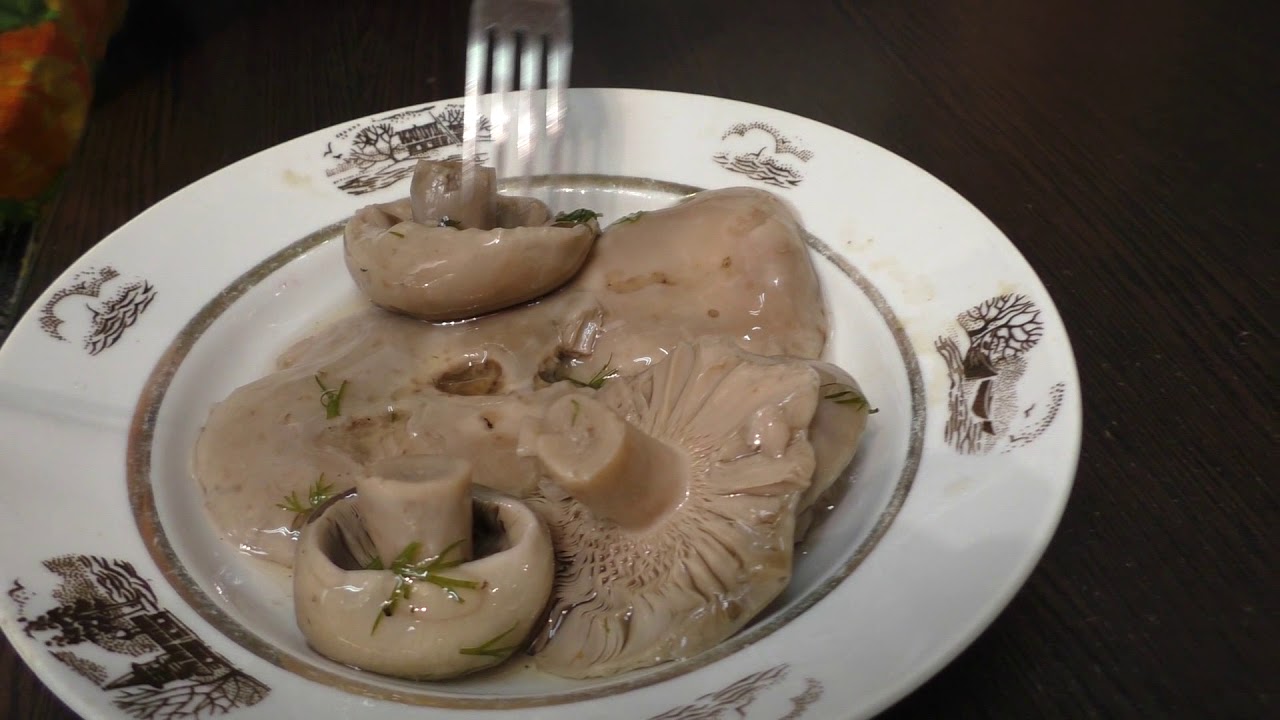
Boiled Russula - Autumn honey agaric is very tasty when roasted, in addition, it can be salted and pickled.
There are many ways to cook these mushrooms, the basic ones are frying and stewing:
- Fried chanterelles:
- heat in a pan 100 ml of sunflower oil;
- pour 300 g of pre-boiled and wrung chanterelles;
- increase fire, brown, stirring;
- reducing heat, pour 300 ml of a mixture of sour cream and water;
- add chopped onion, salt;
- bring to readiness under the lid.
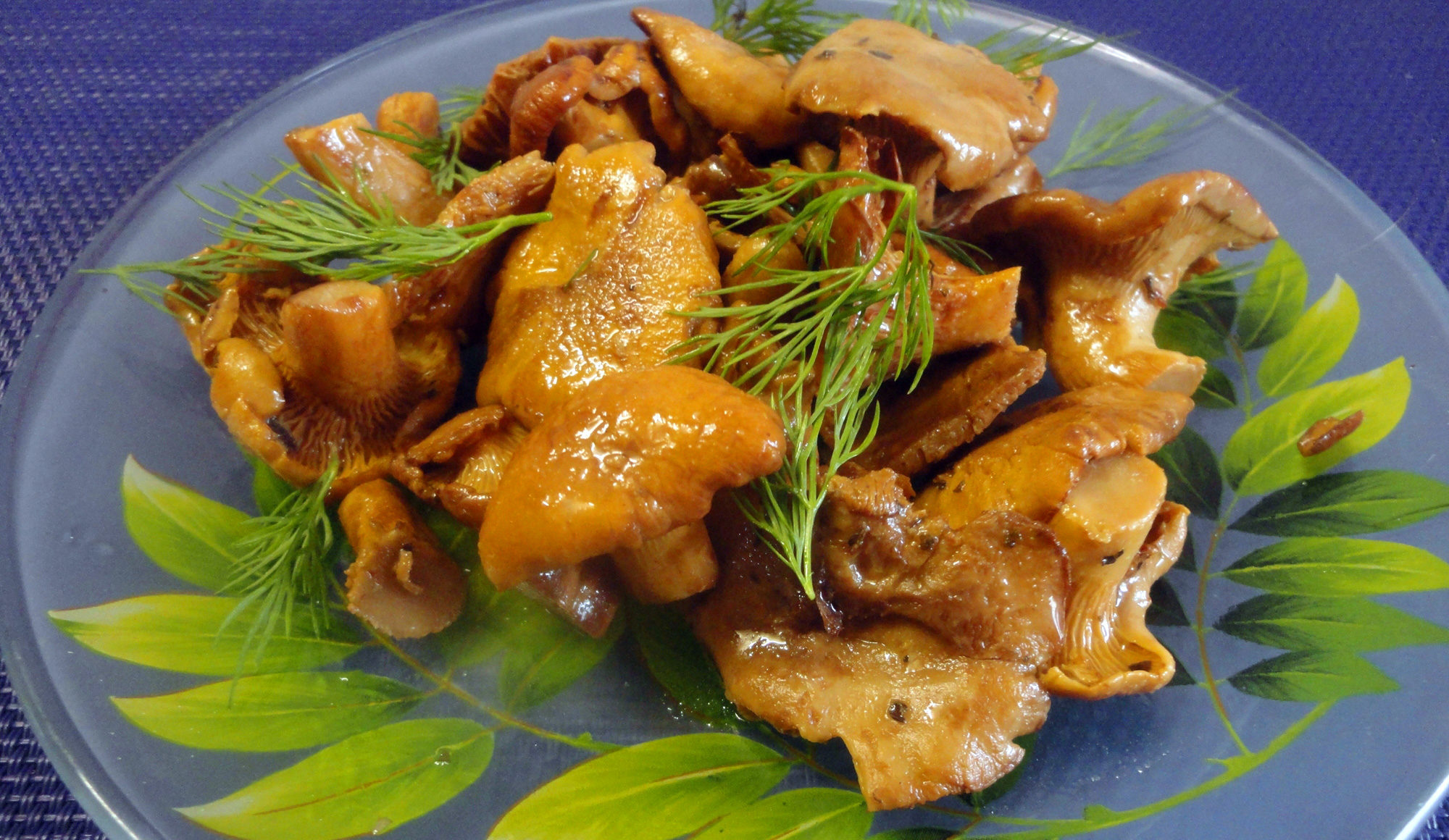
Fried chanterelles
- Baked champignons:
- put 0.5 kg of boiled and carefully squeezed fruit on a greased baking sheet;
- mix 150 grams of mayonnaise or sour cream with 200 grams of hard cheese, add spices, salt to taste;
- pour the mushroom layer with the mixture and put in the oven, heated to 150 ºС;
- after 10 minutes, increase the temperature to 200 ºС and leave for 30-40 minutes.
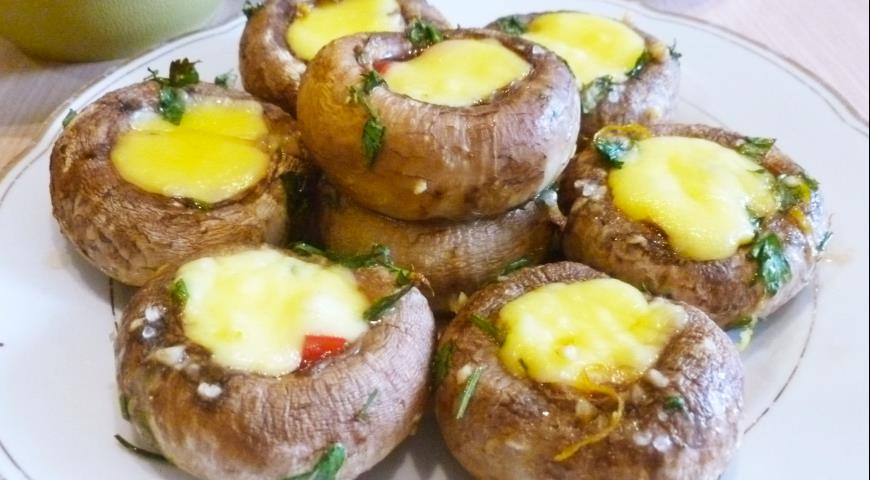
Baked champignons
Often spices are not needed, but garlic, onions, allspice, basil, oregano, marjoram can be added if desired.
Answers to widespread questions
There are a huge number of varieties of this species and when it is planned to hike in the forest for prey, it is important to study in detail all the features of mushrooms in order to avoid health problems and get only pleasant impressions from the collection.

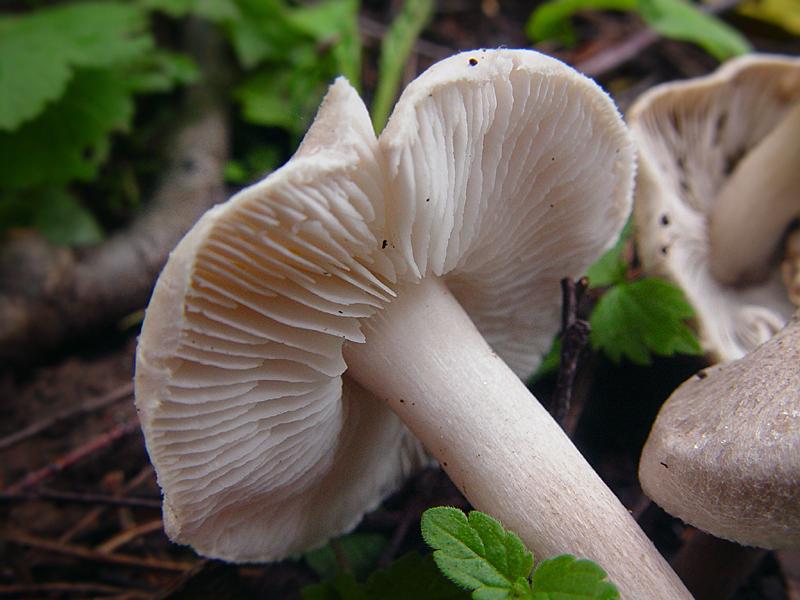
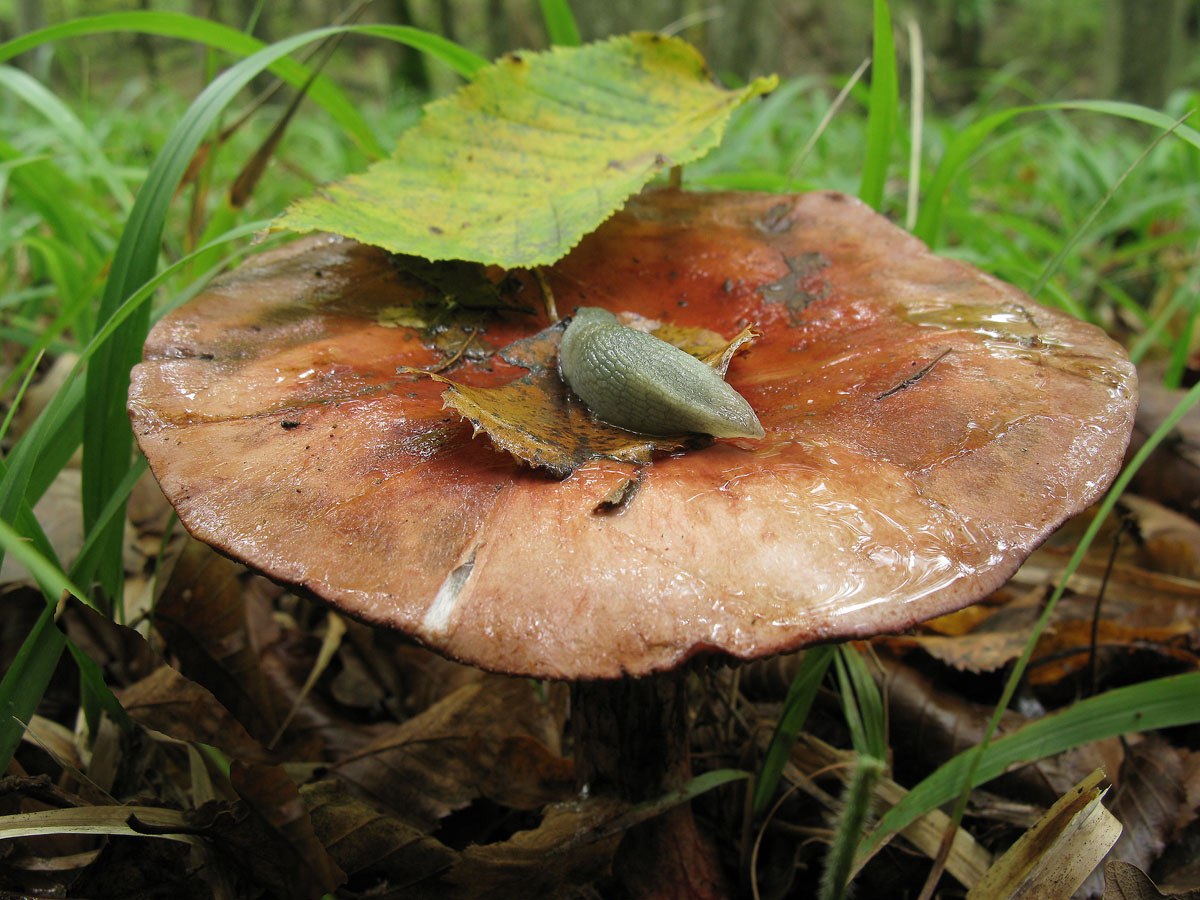
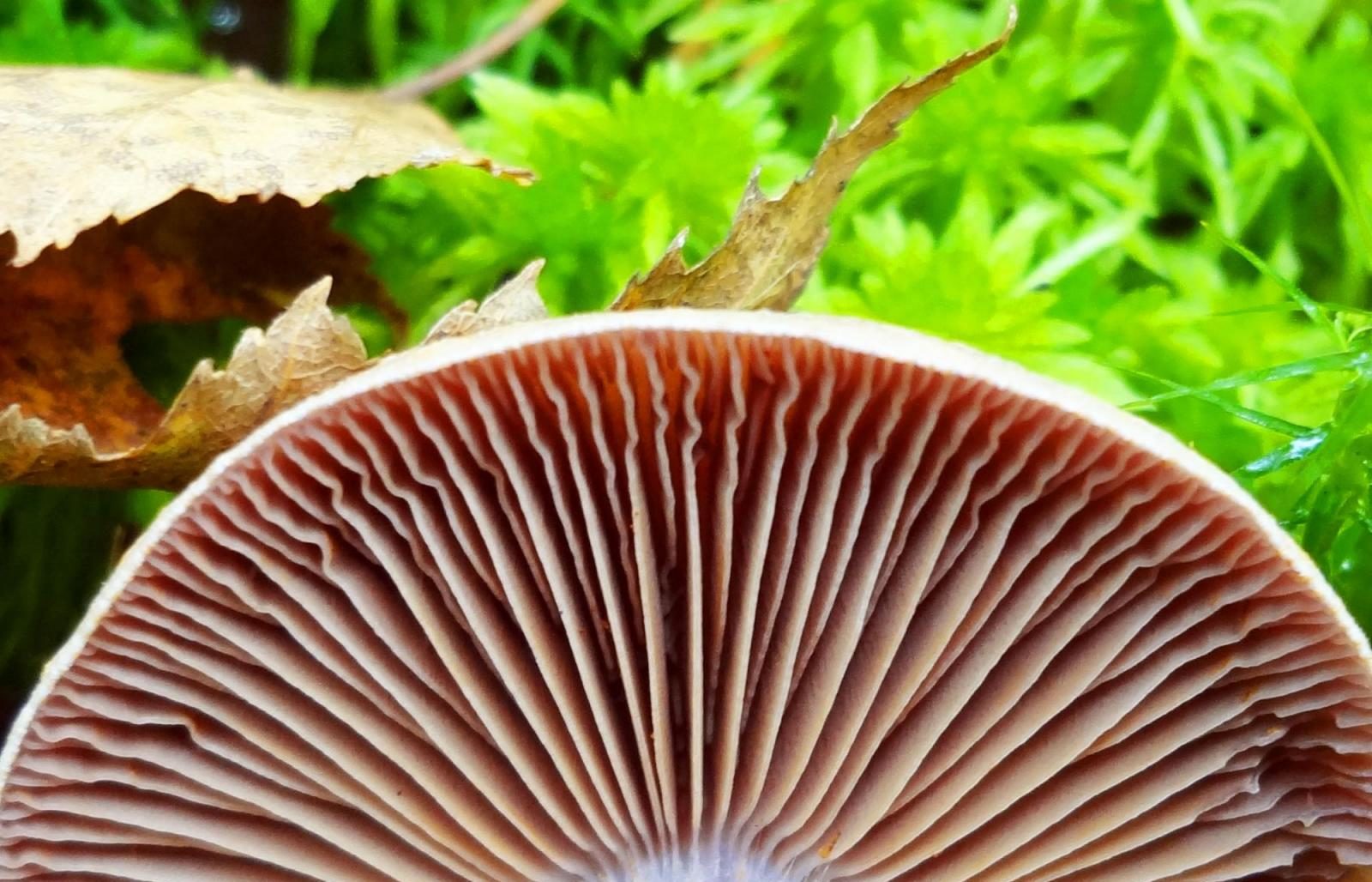
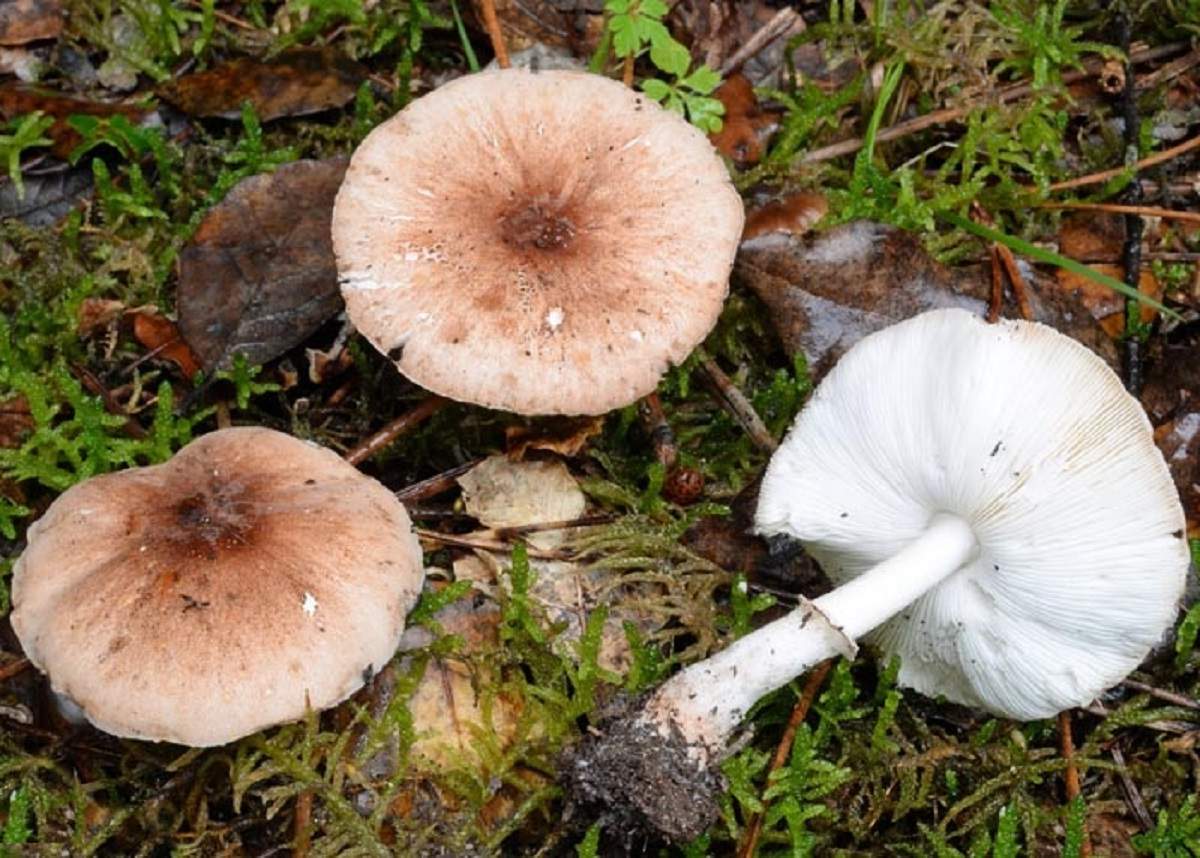
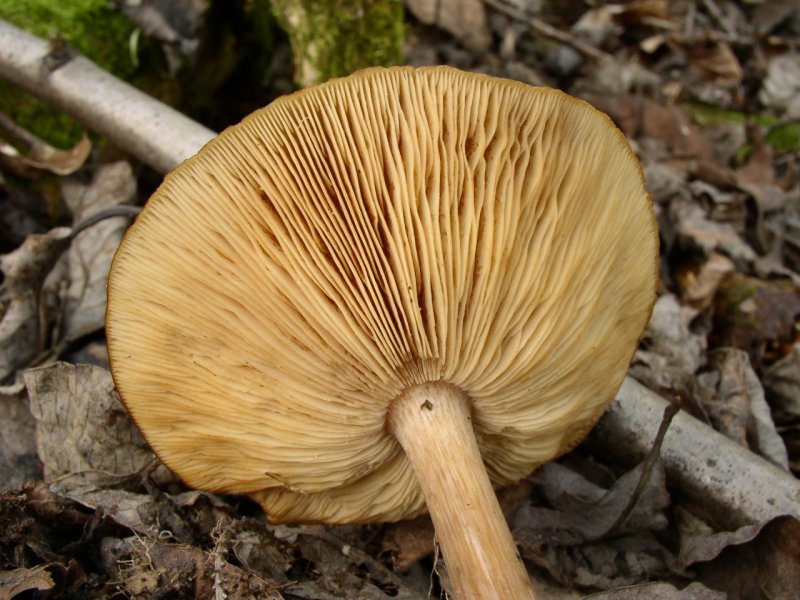
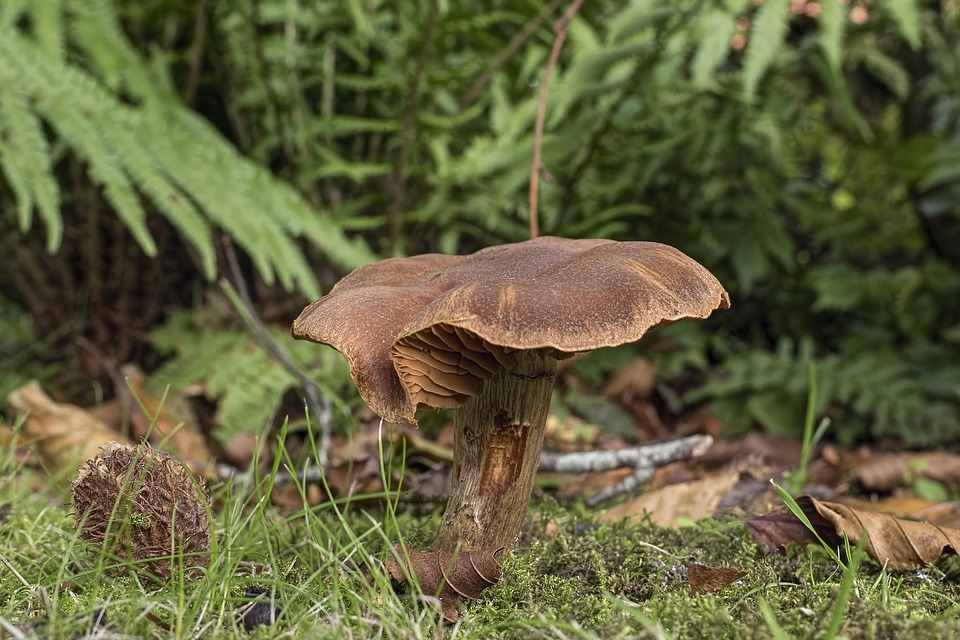
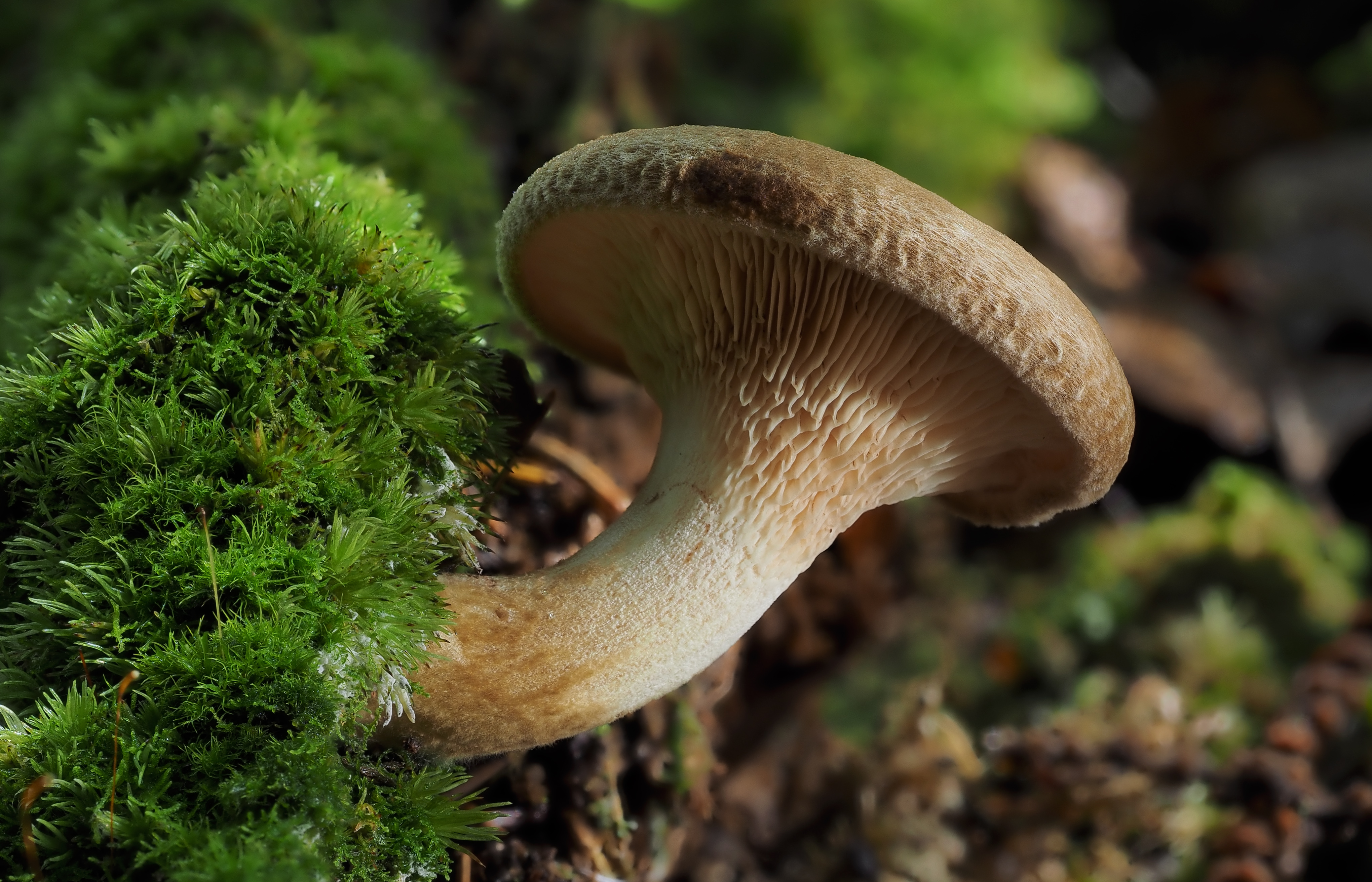
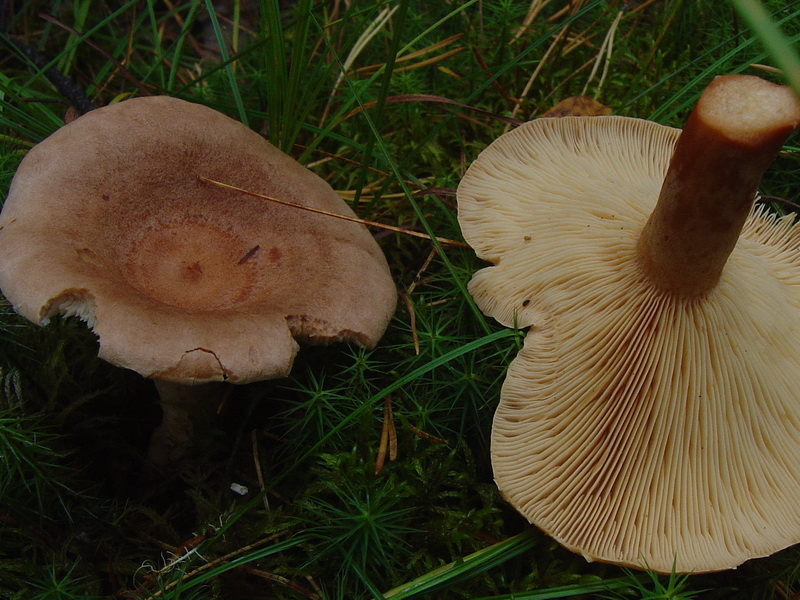
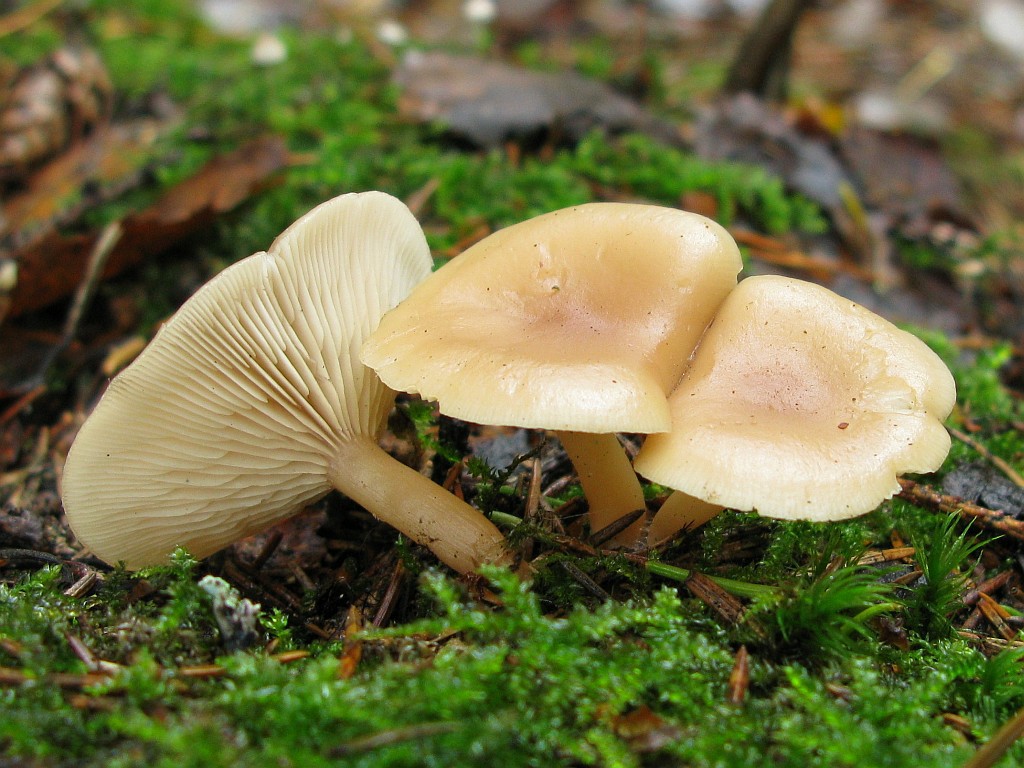
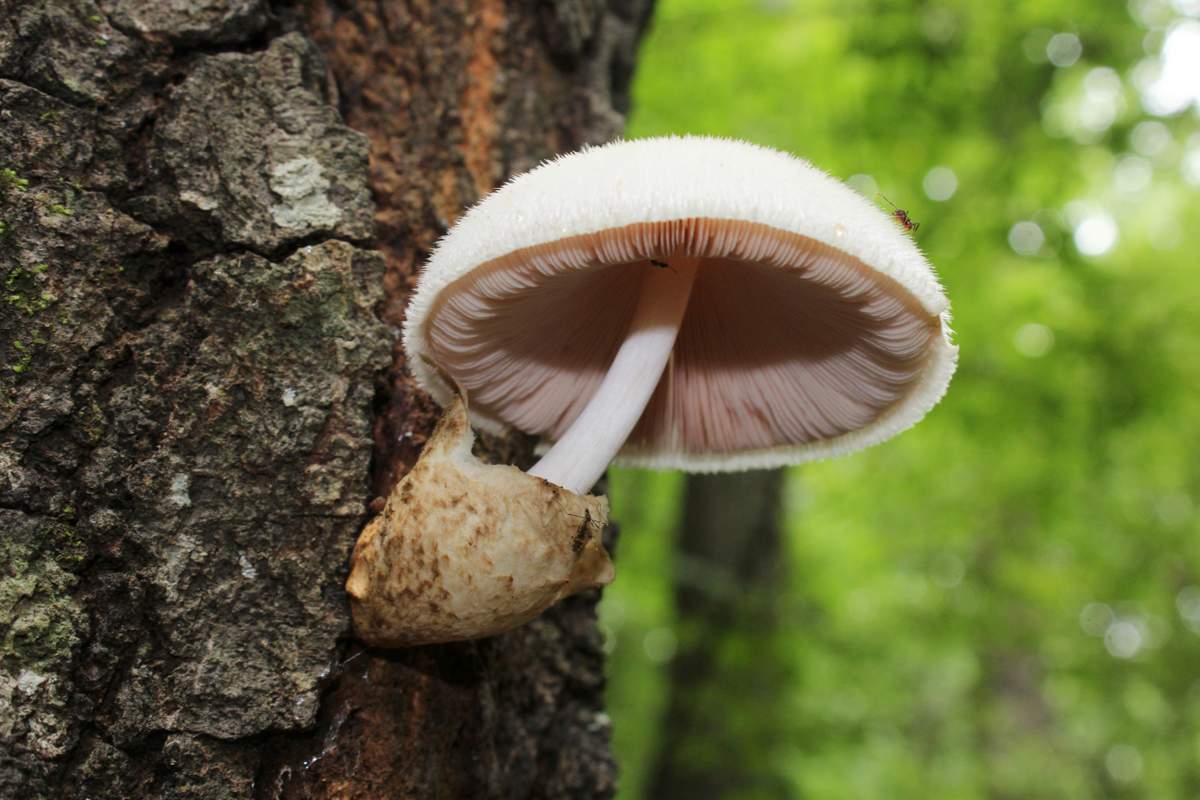
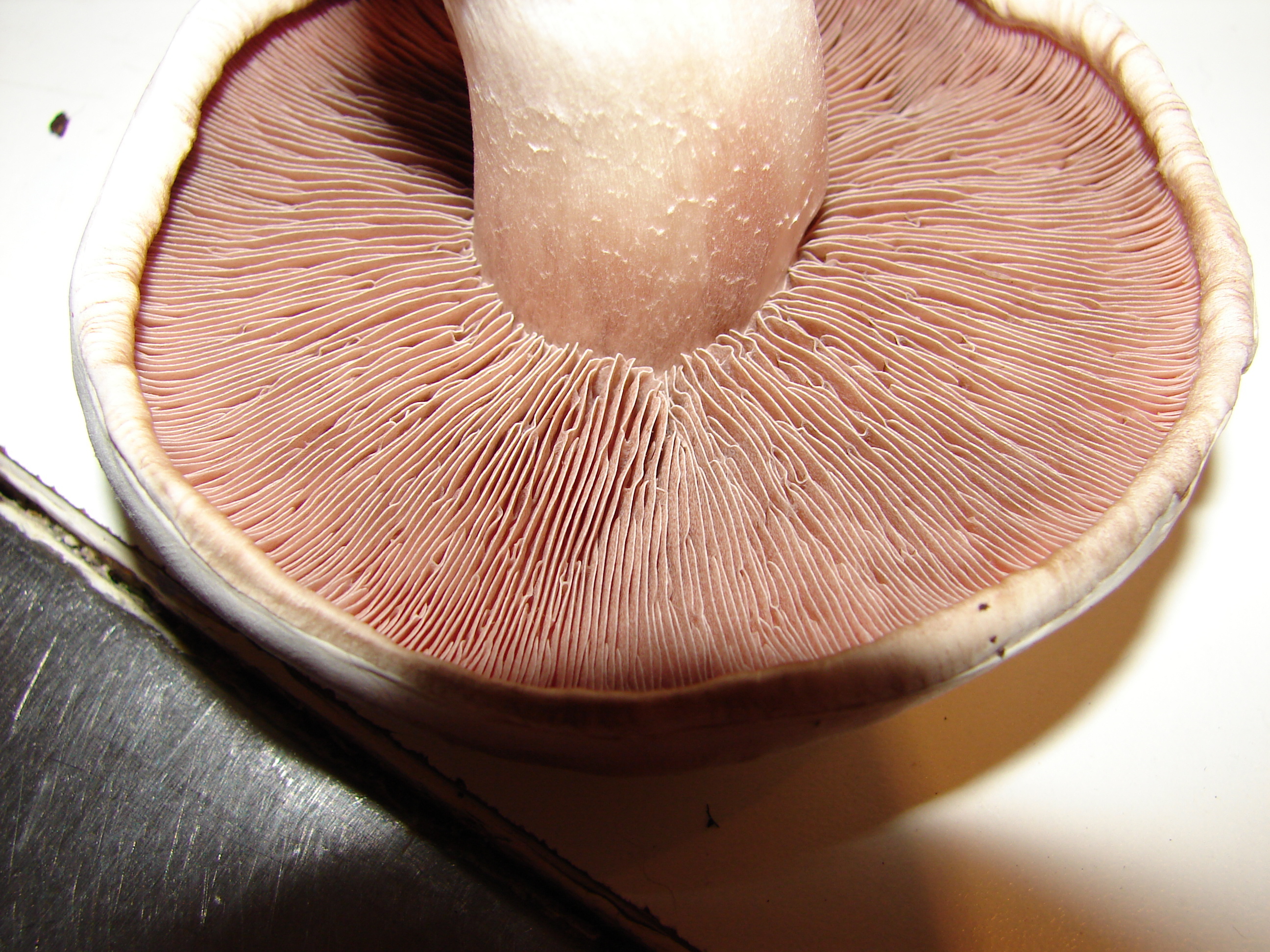
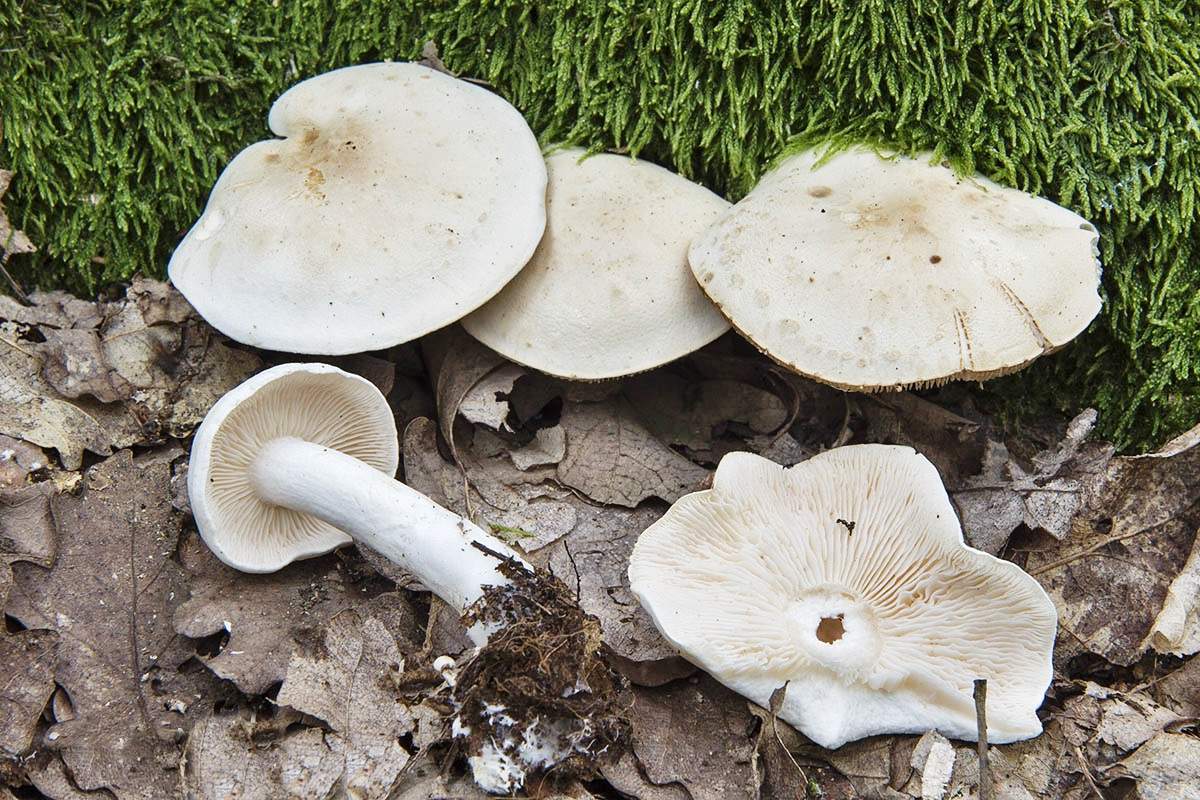
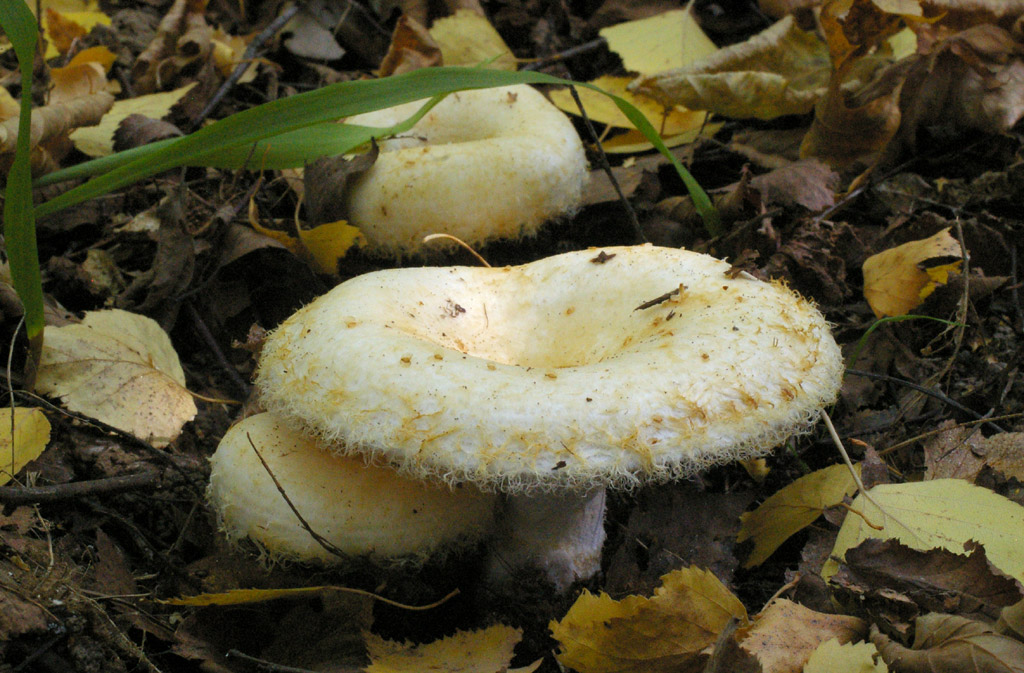
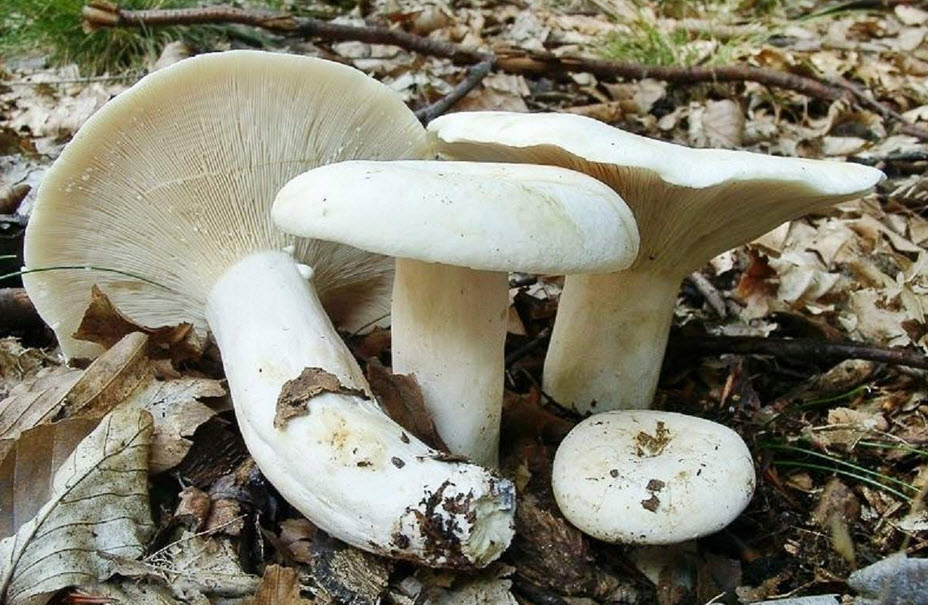

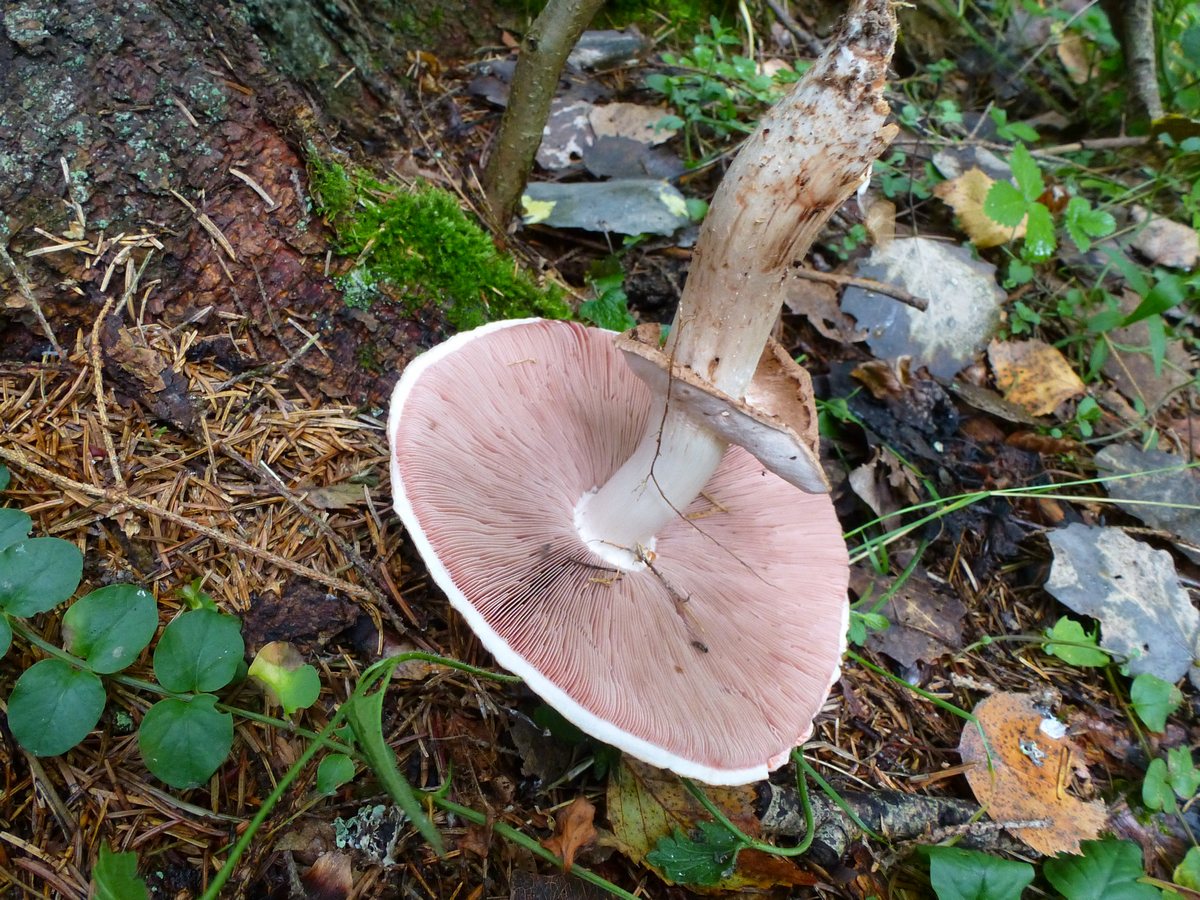
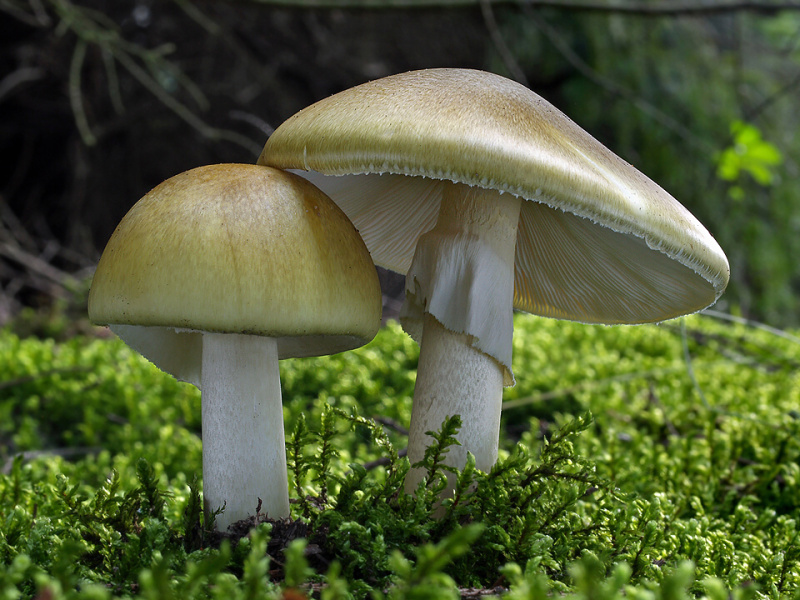
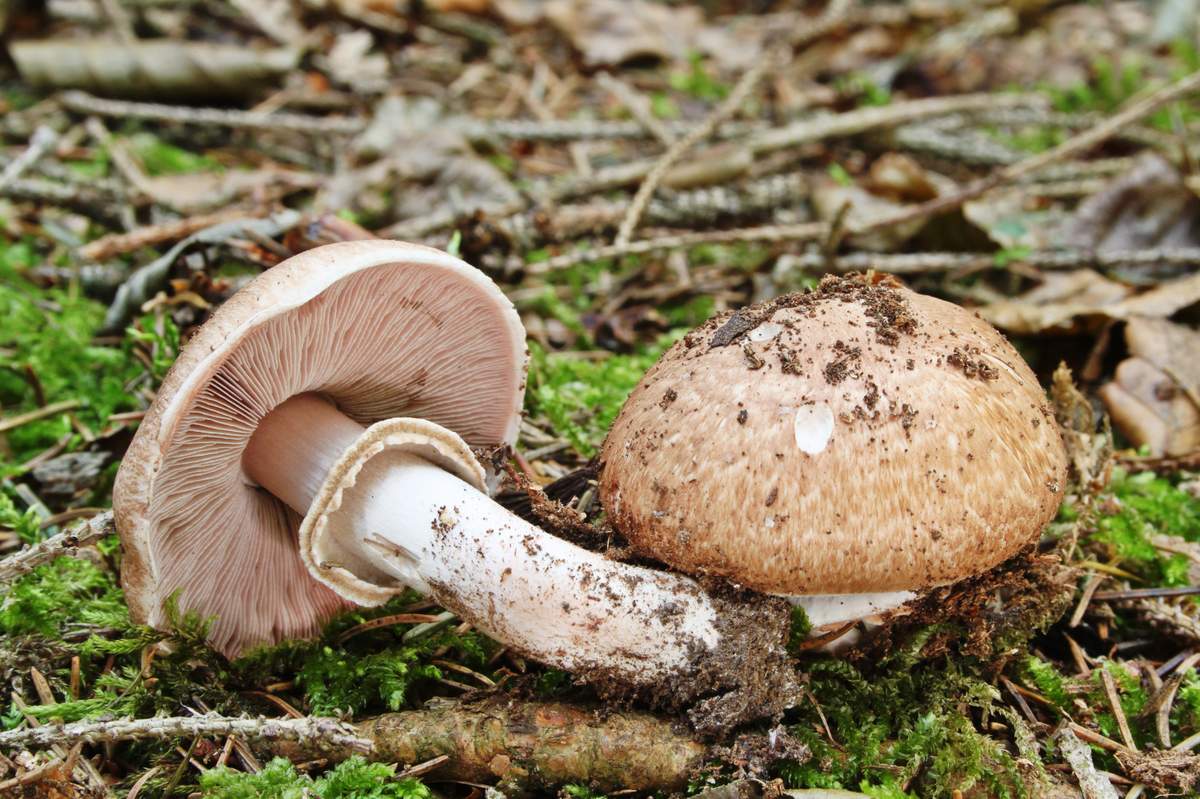
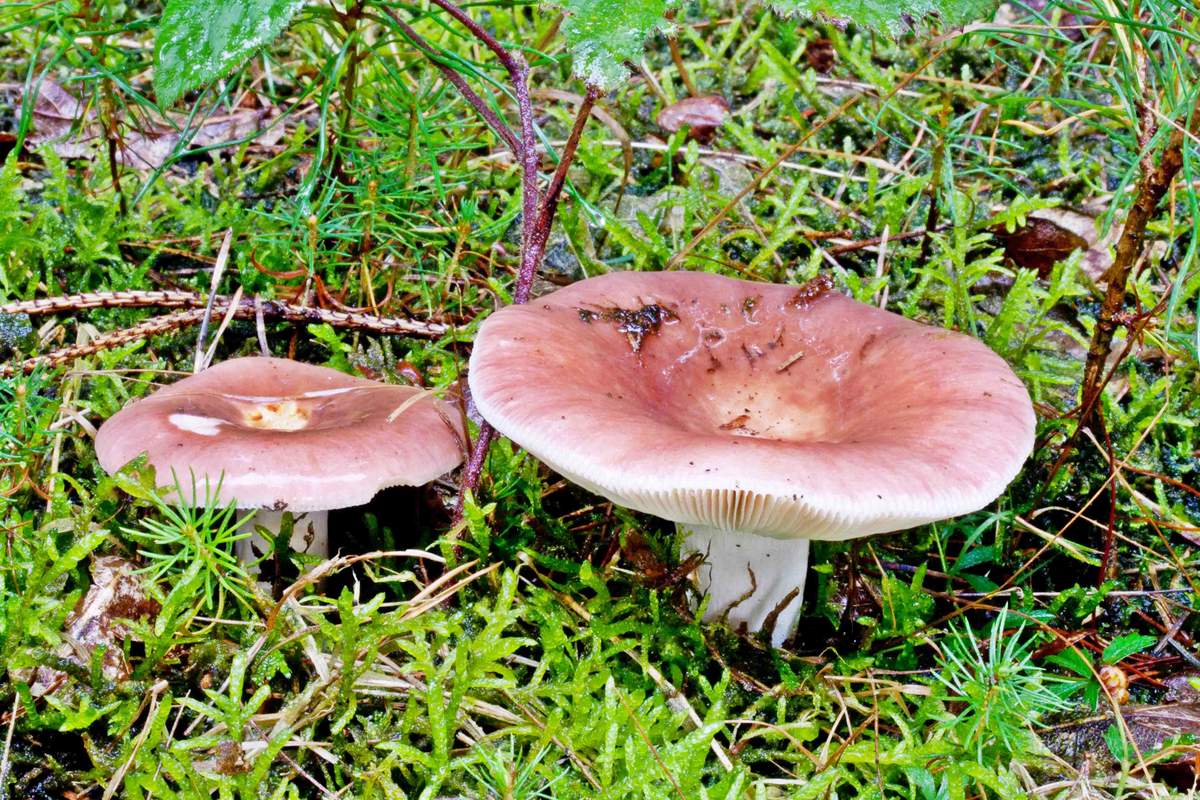
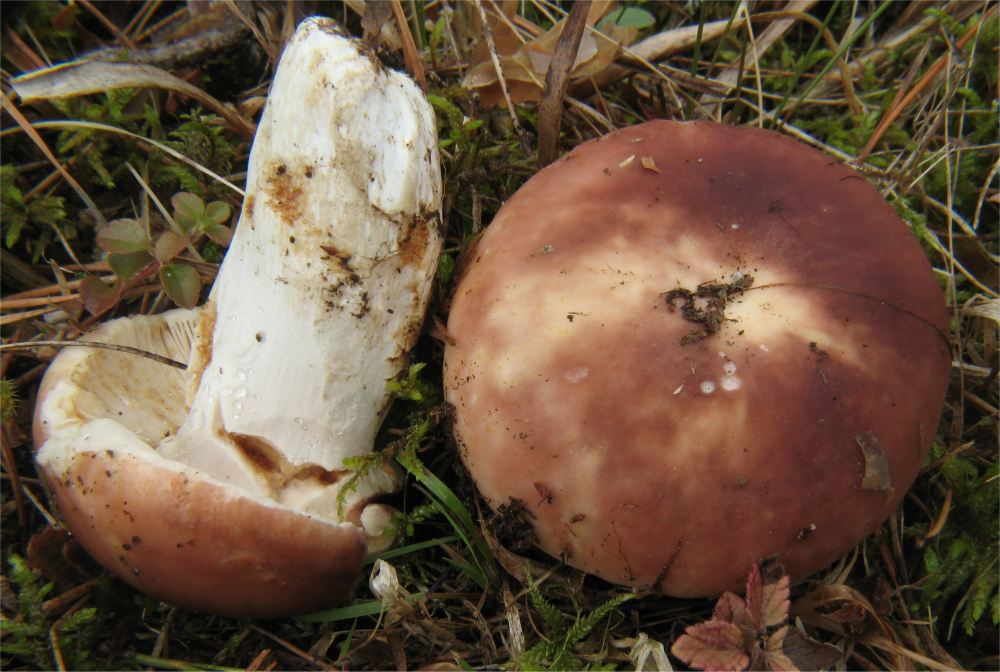
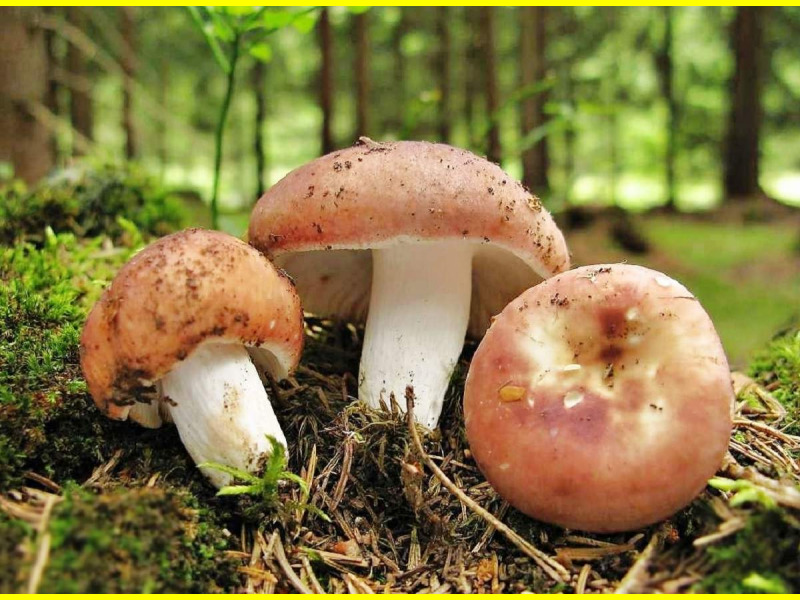
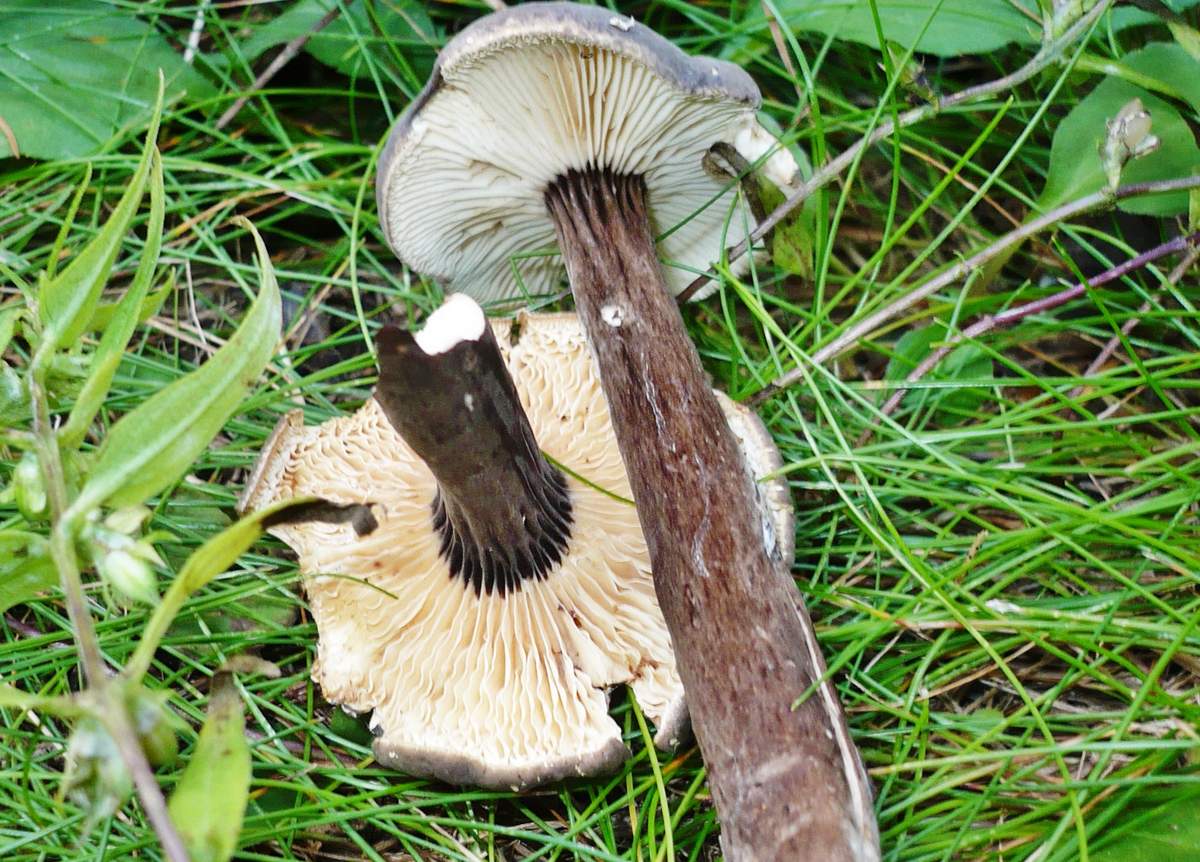
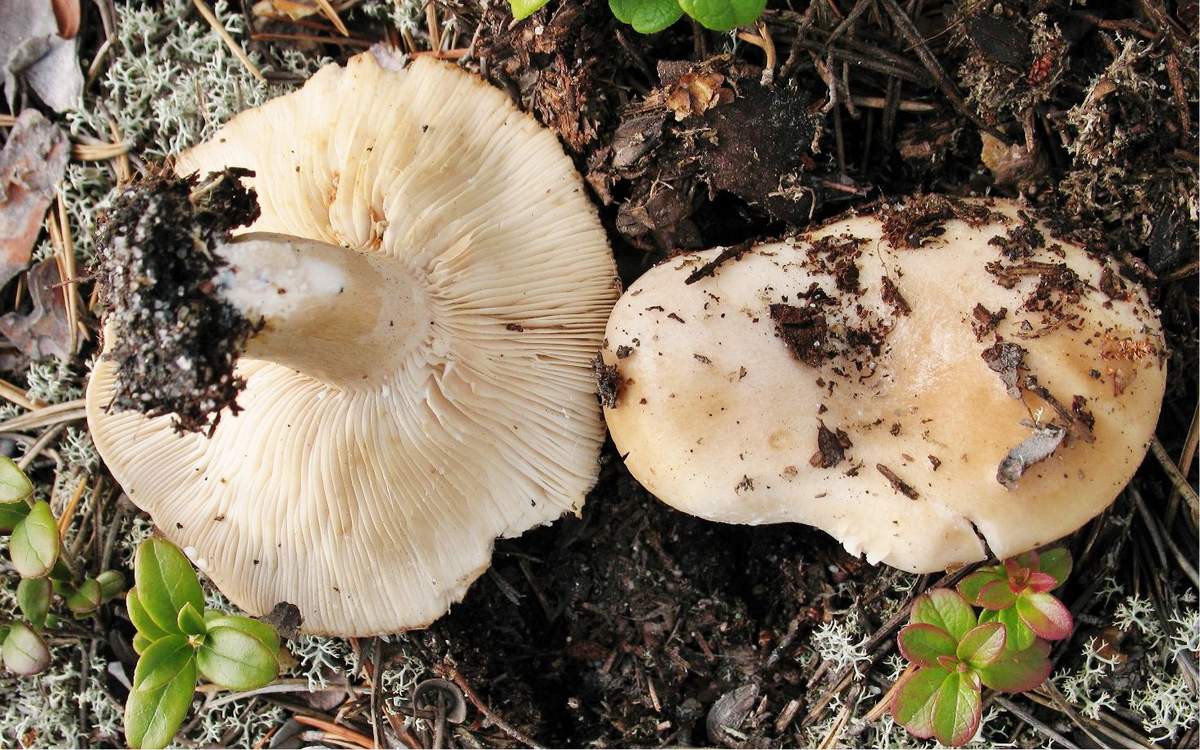
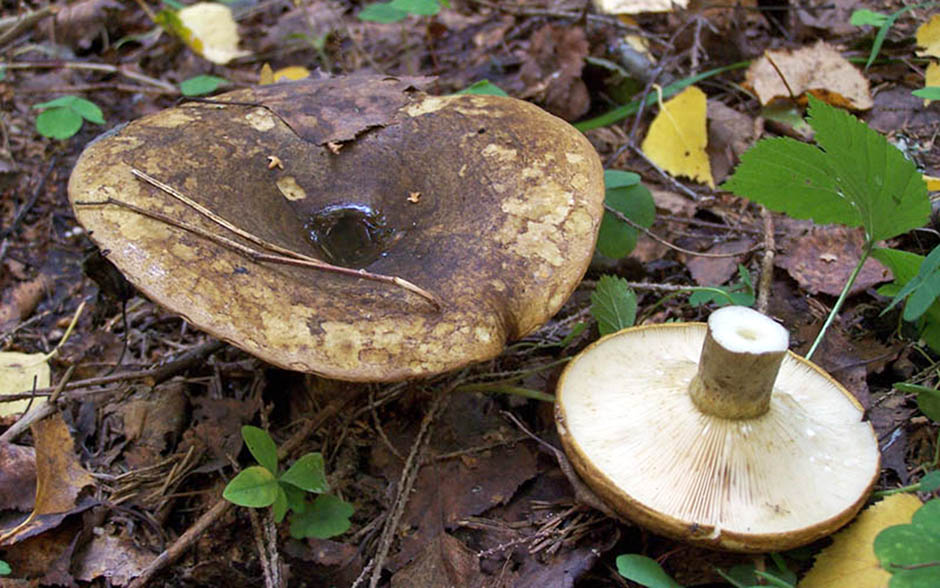
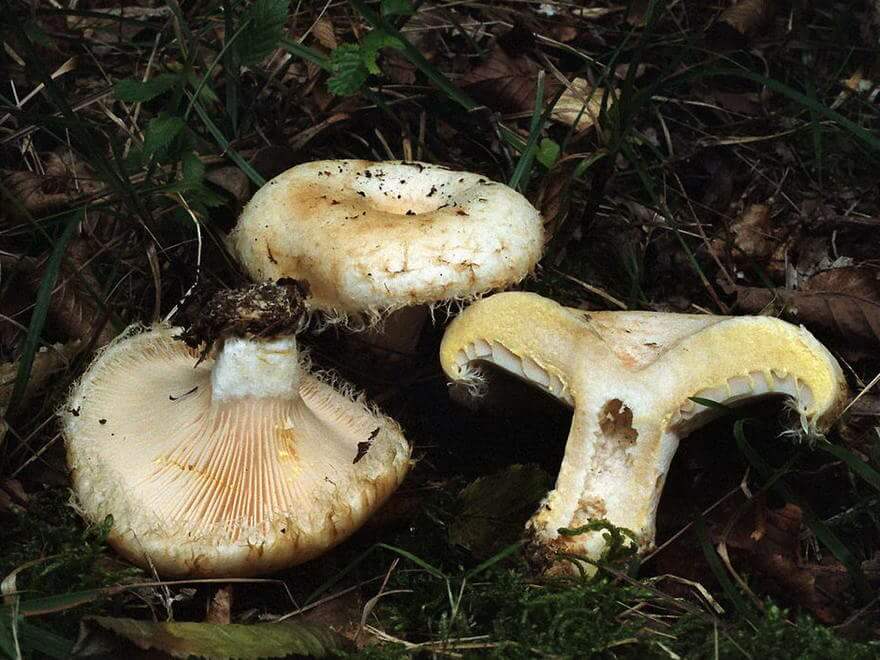



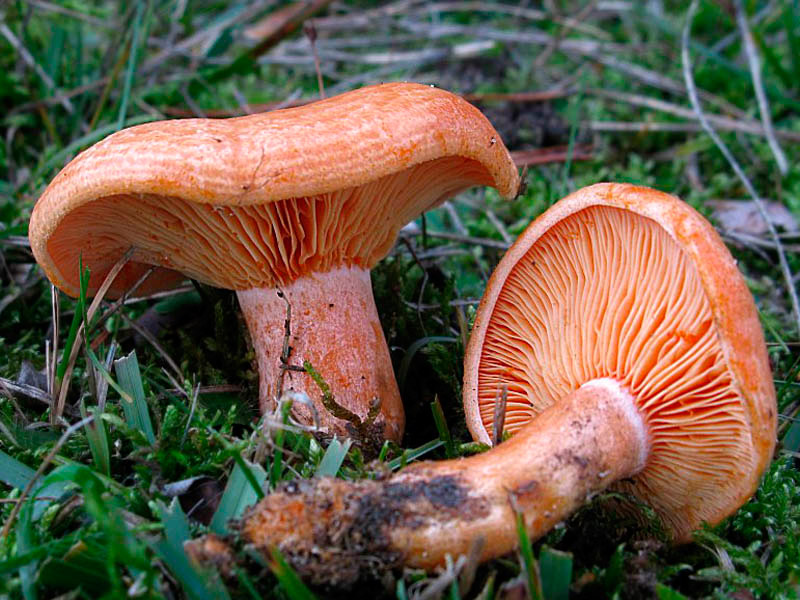
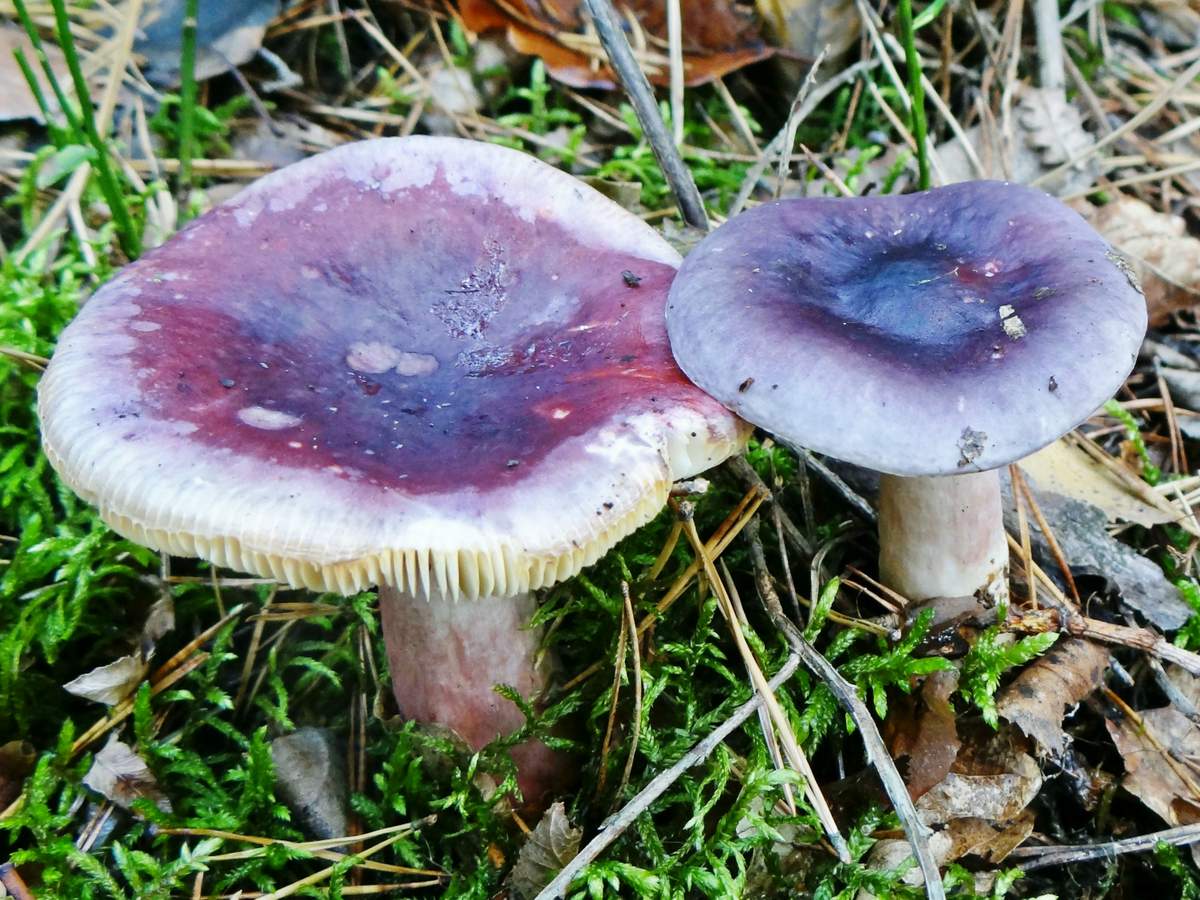
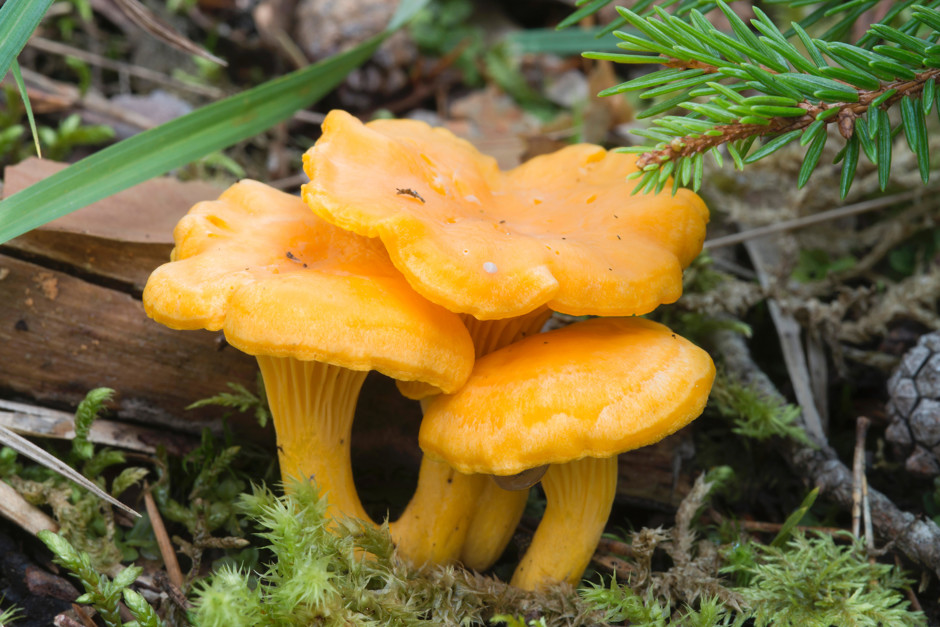
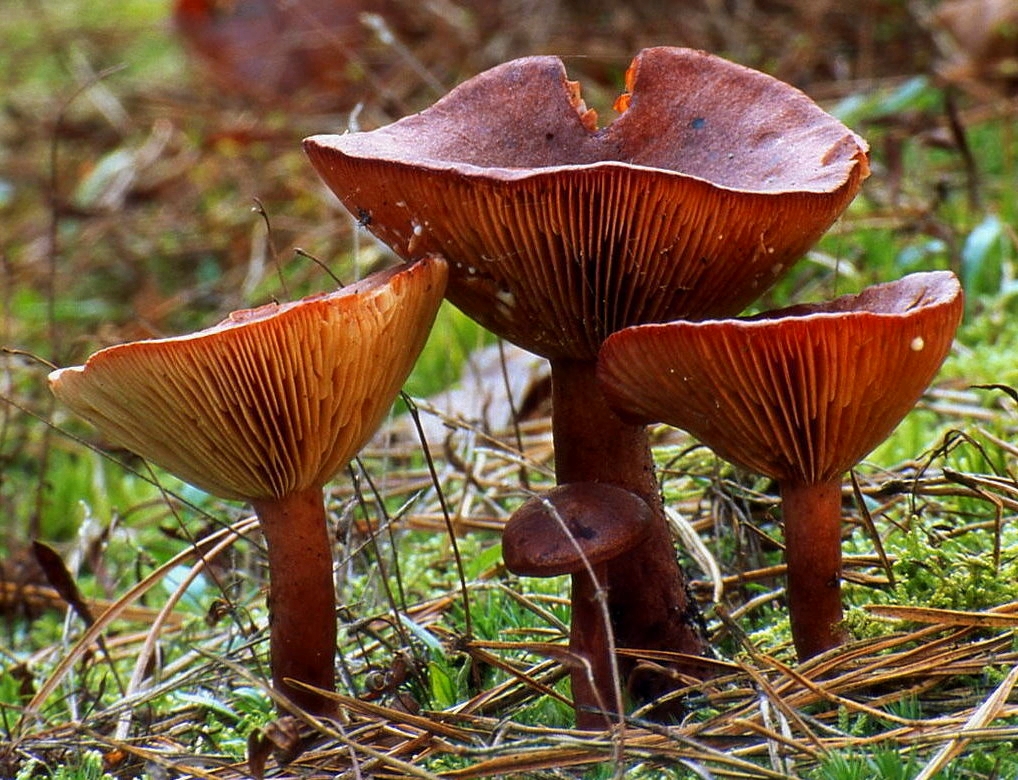
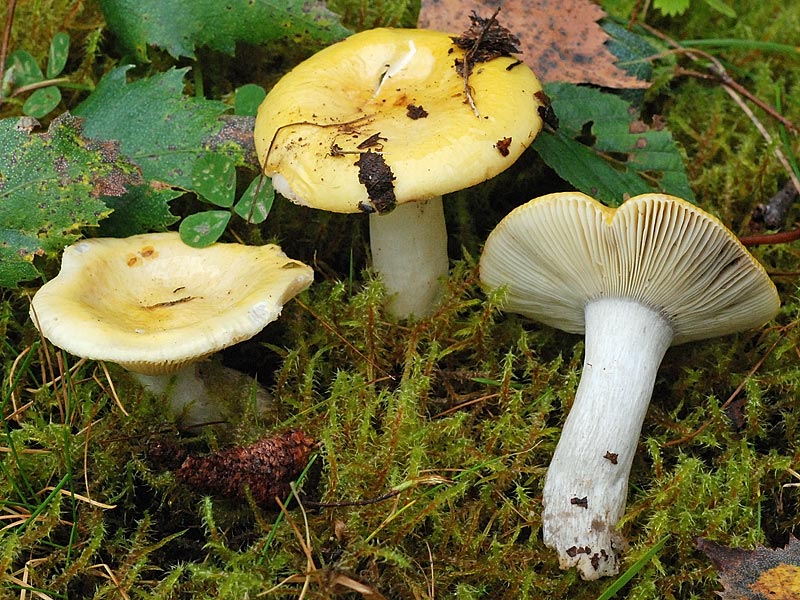
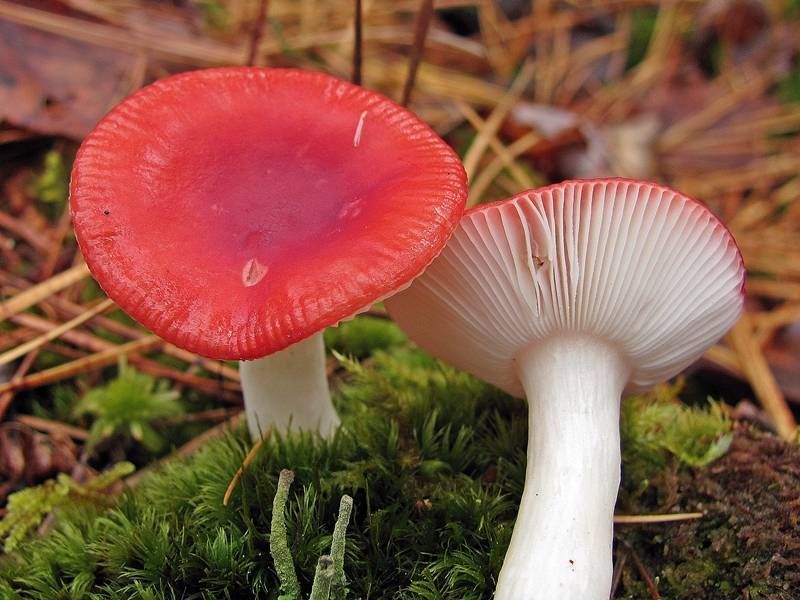

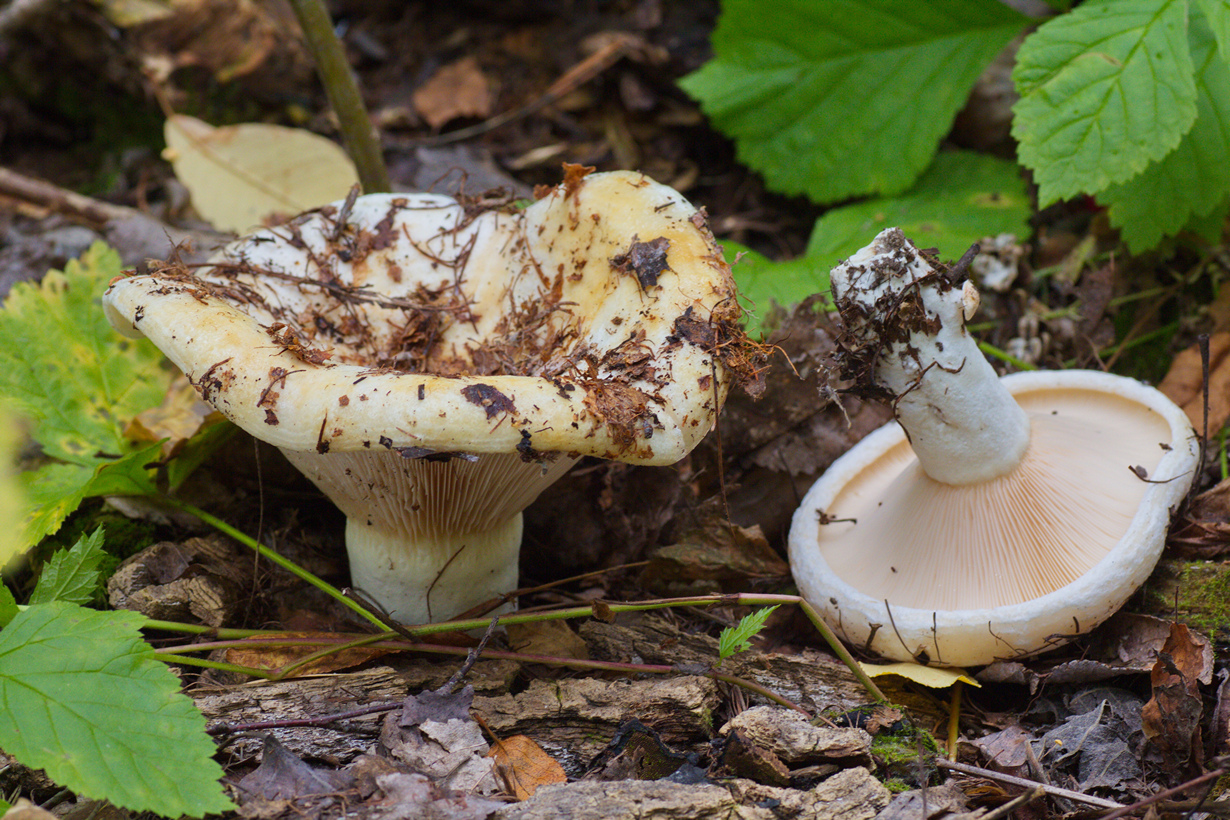
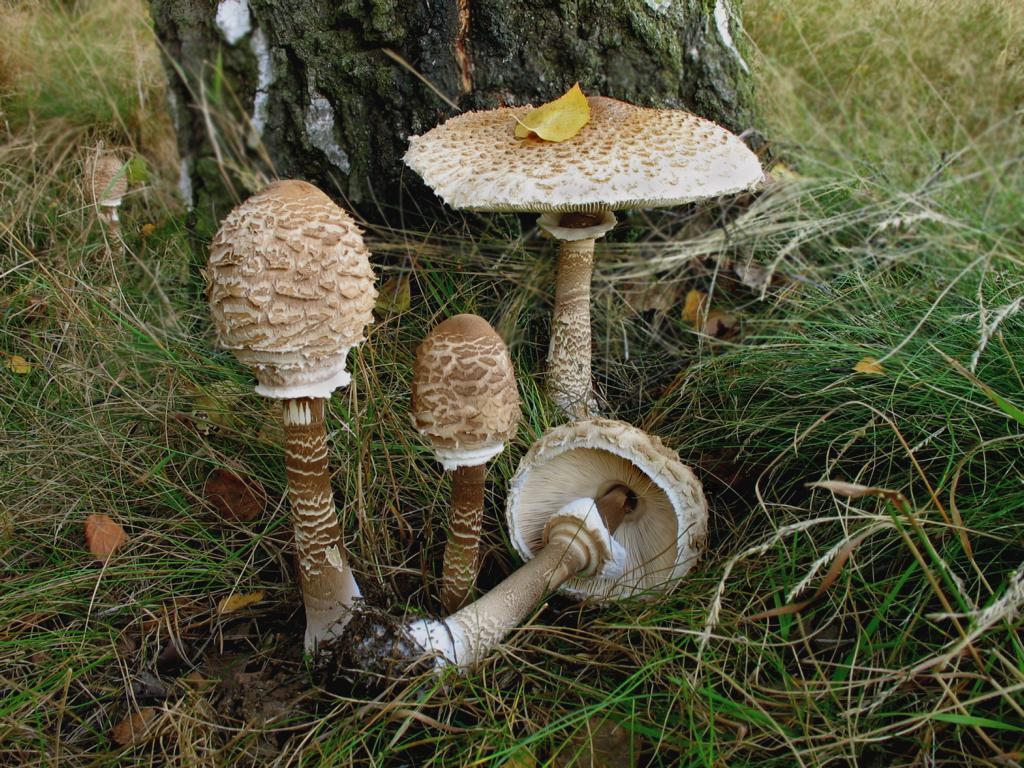
 Care and use of Kombucha at home (+22 photo)
Care and use of Kombucha at home (+22 photo) Edibility of the fungus of the motley umbrella and its description (+19 photo)
Edibility of the fungus of the motley umbrella and its description (+19 photo) Description of edible and inedible oils, their poisonous counterparts (+40 photos)
Description of edible and inedible oils, their poisonous counterparts (+40 photos) Useful properties of milk mushroom and its contraindications (+17 photos)
Useful properties of milk mushroom and its contraindications (+17 photos)